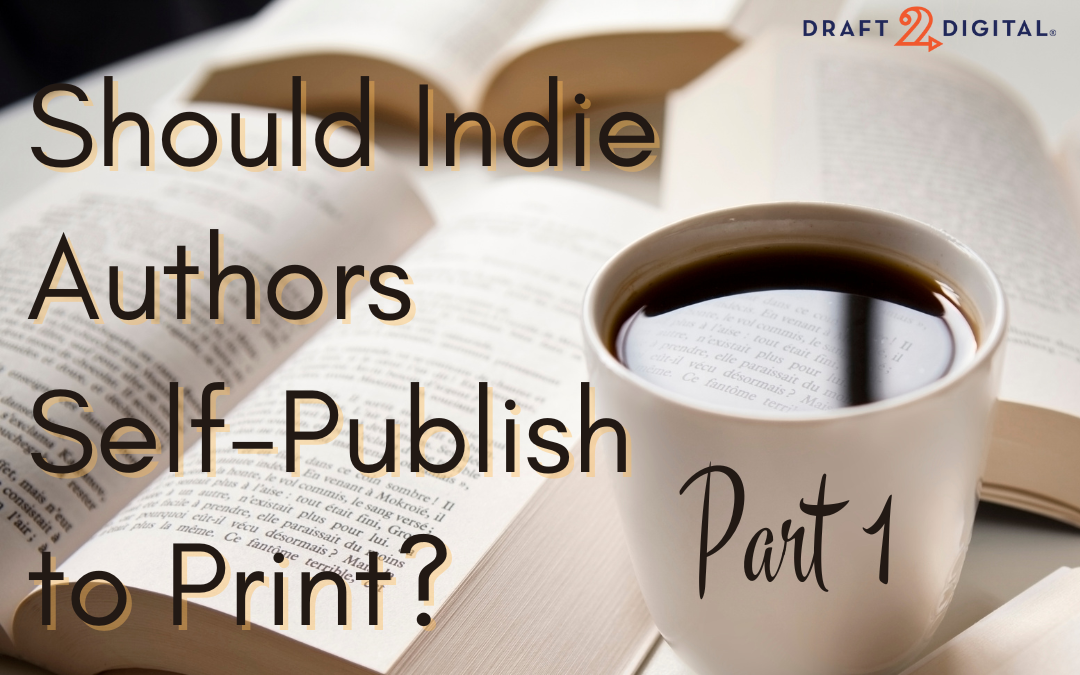World Book Day is coming up on April 23. For many readers around the globe, that still means finding a print book, a cozy place to read, and a few solitary moments to enjoy both.
That’s not to diminish the popularity of audiobooks and ebooks, of course. Both are still popular mediums for readers worldwide. But according to data from Statista, ebook sales still trail print by a wide margin. In the U.S., an estimated 23% of the population bought an ebook last year, compared to 45% who purchased in print.
In this article, we’ll take a look at some of the reasons behind the popularity of print and debunk some of the myths that still hold indie authors back from self-publishing to a print format.
Worldwide, the bulk of sales are still in print
While the rise of ebooks broke the doors of publishing wide open for indie authors, data shows that the bulk of worldwide sales still happen in print.
The 2022 stats from WordsRated speak for themselves:
- For every ebook that sells, roughly four print books are sold
- Print is the most popular reading format for children and adults
- Over one-third of Americans claim to only read print books vs. 7% of Americans who claim to only read ebooks
- 65% of American adults have read a print book within the past year
If you see these stats and think you’d only be targeting an older demographic of readers with print, you’d be wrong. Pew Research found that 70% of readers between ages 18 and 29 say they read print books, compared to 42% who read ebooks.
The cost of print has gone down
The good news for authors is that print doesn’t have to be an expensive endeavor. Thanks to the ready availability of Print On Demand (POD) services through providers like Draft2Digital, print is more accessible to indie authors today than ever before.
In the not-too-distant past, authors were hesitant to self-publish to print because of the additional costs involved with formatting for a print layout, preparing the spine and back matter design, and the investment in purchasing a print run.
These days, thanks to services like D2D Print, those additional startup costs are almost entirely out of the picture. We offer a wide range of formatting options that will satisfy the vast majority of authors, and we’ll even create the spine and back matter based on the cover art you upload. You’ll still want to order a proof copy to make sure everything looks good prior to selling your print book far and wide, but the added cost of creating a print book has gone down to nearly nothing.
Even where up-front costs like proof copies do exist, they’re a one-time fee, so you have the life of the book to make that money back. In most cases, selling just a few copies does the trick. And with POD, you don’t have to invest in a big print run. For less than $10, you can usually get an author copy of your book, with no minimum orders or direct involvement in order-taking or shipping.
In our humble opinion, it’s a price well worth paying for the satisfaction of holding your book in your hands and seeing your name in print.
Self-publishing always requires some investment
You’ll incur at least a few publishing costs to create a high-quality book in the first place, whatever the format. Even ebooks will require hiring an editor (and maybe more than one editor), a cover designer, and possibly someone to help write your blurb and design your ads.
Many layout and cover designers will include both print and ebook (and even audiobook) in their design package, as long as you specify upfront what you’ll need. And as we mentioned, even if you don’t have a print-specific layout ready to hand, our templates can help fix that. All you need to upload is the text file.
Stay tuned for Part 2 of this series, where we’ll dig into the many benefits of self-publishing to print!
